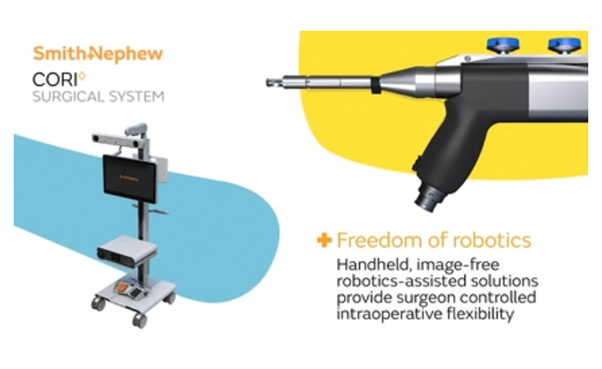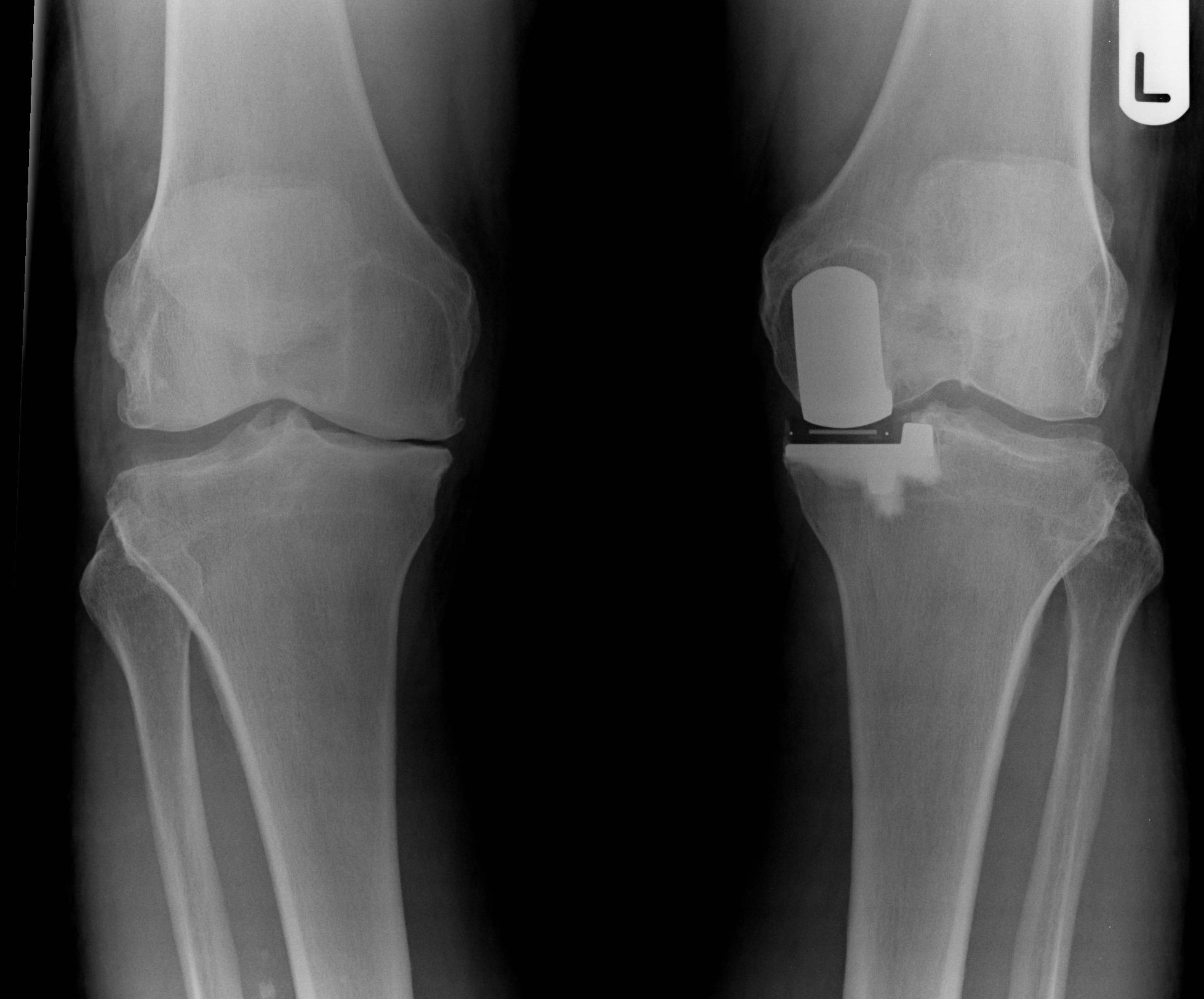
CORI Robotic System

The right knee shows arthritis on the inside of the joint( the bones are almost touching each other where the cartilage is worn away). and the left shows where the inner part of the knee is replaced with a partial knee replacement. this restores the worn out inner knee to give back function and relieve pain
Robotic Partial Knee Replacement
Osteoarthritis in just one part of the knee (unicompartmental osteoarthritis) often occurs in active people who have had a meniscal (cartilage) tear or meniscal surgery many years ago.
In this situation, a partial knee replacement (unicompartmental knee replacement) may be a good option.
Traditionally, replacing this part of the knee was difficult to get right without disturbing the natural balance of the knee. Poorly aligned components can overload the rest of the remaining knee, leading to discomfort and the onset of further arthritis or implant failure.
With the use of the CORI robotic system for this type of surgery, the outcomes are now excellent. It allows enhanced accuracy with surgical planning and execution. Recovery is significantly faster, complications and pain reduced, with high patient satisfaction.

The right knee shows arthritis on the inside of the joint( the bones are almost touching each other where the cartilage is worn away). and the left shows where the inner part of the knee is replaced with a partial knee replacement. this restores the worn out inner knee to give back function and relieve pain
Why is robotic partial knee replacement a good option?
Partial knee replacement preserves most of the undamaged part of the knee joint and only replaces the worn area. The surgery is smaller, and the recovery is noticeably faster and less uncomfortable that total knee replacement, with a lower complication rate. Robotics has been proven to be much more accurate than the older techniques with better outcomes. If your knee is not too damaged, this is an excellent way to get back normal function in the joint.
How long will partial knee replacement last?
When carried out with robotic techniques, we can expect that a partial knee replacement will last at least 15 years. Should it wear out eventually, then revising it to a total knee replacement is no harder than if we were putting in a total knee replacement for the very first time.
If you’re struggling with knee pain, being active, and have maybe undergone a keyhole knee surgery before, please do book in to see me for consultation.






